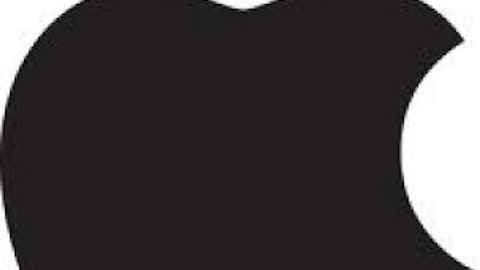The rumor mill on the internet is abuzz with information about Apple Inc. (NASDAQ:AAPL)‘s iWatch, an upcoming wearable computing device. Apple Inc. (NASDAQ:AAPL) can’t base its entire presence in this market on a device which may or may not be able to gain traction. Wearable computing can also extend itself in the realm of augmented reality (AR). A watch by itself simply doesn’t bode well for this concept.
Apple Inc. (NASDAQ:AAPL) won a patent in March for an AR system that can identify objects in a live video stream, and present information corresponding to said objects through a computer generated information layer overlaid on top of the real-world image. This technology could reinvent Apple Inc. (NASDAQ:AAPL)’s current iOS devices, and lead to entirely new ones.
How AR and iOS could work together
The patent describes a system that iOS devices can use in a variety of ways. In Apple Inc. (NASDAQ:AAPL)’s provided example, a real-world 
Apple Inc. (NASDAQ:AAPL)’s aforementioned patent for synchronized, interactive, augmented reality displays for multi-function devices describes an advanced AR system that uses various iOS device features, like a multi-touch screen, camera, and internet connectivity, among others, to facilitate advanced AR functionality.
As with other AR systems, the patent uses real-world images and displays them underneath a computer generated layer of information. In the invention’s example, a user is holding their portable device over a circuit board. The live video displays various components like the processor, memory cards, and capacitors. Also included in this view is a bar code and markers.
In one embodiment, the live video is overlaid with a combined information layer, which can take the appearance of dashed or colored lines, annotations, and other visual cues that are processed and generated by the device’s on-board CPU. Annotations can be in text form, images, or Web links, and provide information in real time relating to the corresponding objects.
While the patent filing proposes an AR implementation using existing technologies found on the iPad (and the iPhone), an earlier filing from the company relating to the same subject matter is slightly more ambitious. It proposes iPads whose display screens have a viewing area with a transparent portion, enabling a user to view objects behind the electronic device by looking through the display screen.
Additional implementations could call for an iPad with two or more display screens (each having respective viewing areas with transparent portions) arranged in an overlaid or back-to-back manner, or two display screens whereby one display screen is partially opaque, but displays a transparent window that’s movable via multi-touch input from the user.
Can Apple’s AR-Based devices beat Google Glass?
Google Inc (NASDAQ:GOOG) has made the concept of AR commercially viable with Google Glass that will be launched later this year. The device is a wearable computer with a head-mounted display that can run apps, record high-definition video, and is operated through voice commands.
Already, a range of apps have been developed for Google Inc (NASDAQ:GOOG) Glass, including those for Facebook, Path, The New York Times, Gmail, JetBlue, and Skitch. Google says the technology can inform users about weather forecast, provide directions, send messages, and translate.
Apple’s recent acquisition of WiFiSlam, an indoor presence company that pinpoints a user’s location by using WiFi signals, can transform Apple’s patented AR technologies into great products. If they can locate and address a user using a hybrid of WiFi and 3G signals, they can be in a unique position to push relevant content to each user without all the privacy concerns of Google’s Glass.
For Apple this isn’t a far-fetched science fiction to launch an AR-powered iOS device. This is very much possible today as the technology already exists. Smartphones can do all these things, but their form factor isn’t as efficient as Google Glass. All that would be required in this case would be for a wearable device to have mobile data connectivity, a database to reference, a transactional app, and a credit card or equivalent, on file. Apple can provide all of those, including the software ecosystem and a social discovery app.
Conclusion
Apple’s stock has taken a financial beating in the past few months, despite delivering record-breaking sales quarter over quarter. Ironically, everyone agrees that Apple is still a grossly undervalued stock. Apple trades less on financials and more on market sentiment. Although an AR-based iOS device is unlikely to be significant immediately for Apple’s financials, I do believe the successful introduction of such a device could illustrate that innovation remains high at Apple and reaffirm some investor sentiment.
Anindya Batabyal has no position in any stocks mentioned. The Motley Fool recommends Apple and Google. The Motley Fool owns shares of Apple and Google.


